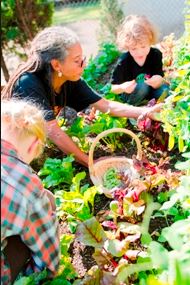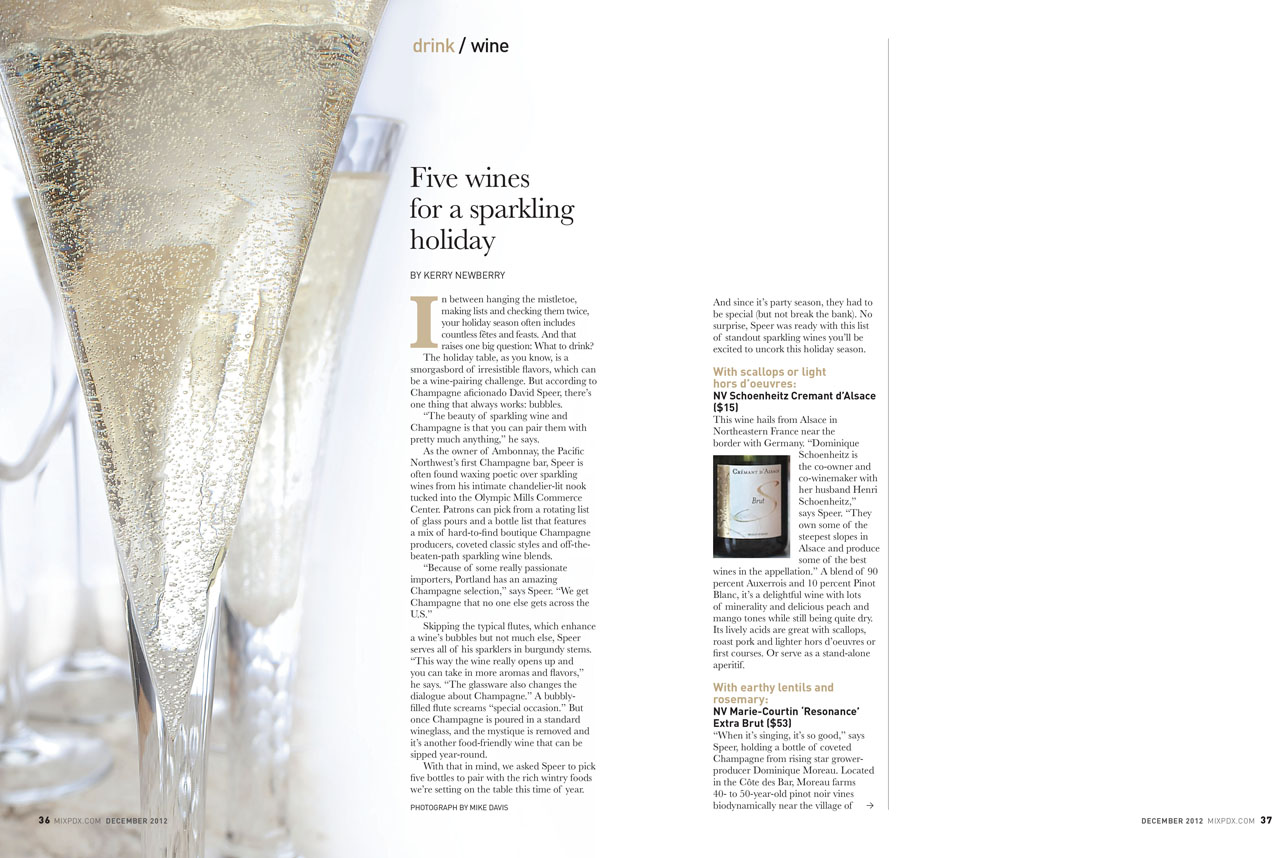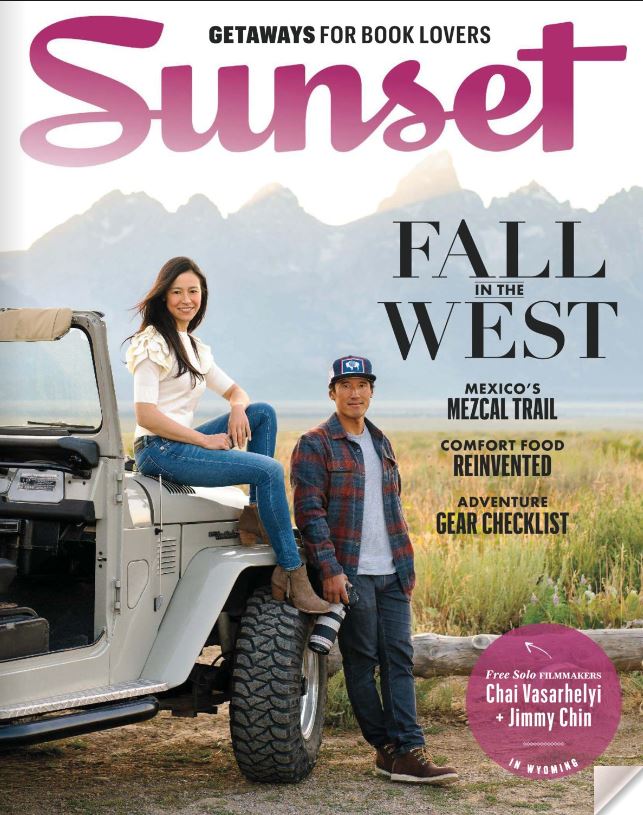Escape to the Country: My Farm Vacation

This is the story of my weekend herding lambs, gathering eggs, and hobnobbing with a peacock at Leaping Lamb Farm.
A strutting show queen of a peacock was the first to appear. Then the largest and most flamboyantly good looking white Holland turkey I’ve ever seen. “Look at his wattle,” I say with awe – my eyes fixed on the bright, cherry-red flesh, dangling like an ornate holiday tie. I’m fresh from the city for my country farm stay about 25 miles southwest of Corvallis, in the coastal mountain range.
The turkey parades closer, puffing out his chest with each step, the sound like the deep beat of a drum. I wonder if this magnificent fowl is a new form of farm guard dog or if he’s just saying ‘hello.”
“He’s showing off,” says Leaping Lamb Farm owner Scottie Jones, eyeing the Turkey Tom, her eyebrows raised knowingly. “He also loves the color pink.” I looked down at my glitzy pink galoshes and the turkey now fixated on the bright boots, his tail feathers fanned. I later learn that his strutting and thumping is turkey courtship (or fowl flattery). It worked. I immediately fell for him, although I had to wonder if he was wooing me or just my boots.
Though charming, the gallant turkeys are not the primary draw or production animal raised by Jones and her family. That would be a flock of grass-fed Katahdin lamb, already away in the manger since dusk is settling in. Herding sheep, feeding farm fowl and plucking fresh chicken eggs are all on my agenda for the weekend escape. Plus, a little reading and stargazing into the endless sky sans city lights. This is my first farm vacation.
Agritourism, the farmhouse vacation, took root in Italy in the 1980s, as small farms became less profitable and farmers were leaving the countryside for jobs in the city. Opening farms to vacationers emerged as an effort to diversify farm income and sustain traditional small-scale farming.
The Italian government launched a program in 1985 to subsidize the restoration of old farm houses to service guests. Since then, Europe has been a hotbed for agritourism. From Spain to Switzerland, vineyards to olive groves, travelers have their pick of where to stay.
The appeal of agritourism has been slower to catch on in the United States. Farmers question why someone would pay to stay—and even help out—on a farm. The trend, however, is growing, as more people want to see and experience where their food comes from and to escape to a simpler life—if only for the weekend. Scottie and Greg Jones opened their lamb production farm to guests in 2006 to diversify profits.
“It’s been wonderful,” says Jones, of hosting guests on the farm. “We’ve maintained relationships with many of the people that come.” One couple returns once a year from New York City. “They sit on the deck, read books, and they drink wine for a week. They just chill. There’s no cell service so nobody can contact them,” she says. Others return every spring for the lambs.
Eager to peek at the lambs, Jones walks me to the barn, pink hues splashing across the sky, a brook burbling in the distance. (It sounds like a storybook, and it feels like one, too.) White furry balls—too many to count—are sprawled and stretched all akimbo, slumbering across the soft hay.
“This is what’s known as a cuddle puddle,” says Jones.
The following morning, my coffee comes with a serenade of cock-a-doodle-doo. Jones and her daughter Annie, a recent college graduate applying to veterinary school, pick me up at my cabin at 9 a.m. for the first stop: the chicken yard. Jones inherited ten chickens, along with Fred, the electric-blue peacock, and a gaggle of geriatric geese, when moving to the farm.
“Within the first day, our dog tried to kill the chickens, and within the first week, he tried to kill the sheep,” she reminisces. “Now nobody chases the sheep or the chickens.” Case in point, as Cisco, the Labrador, steps coolly into the chicken yard with us and the chickens and roosters immediately run toward us.
holding a lambI scatter feed from a bucket with Annie, greeting each chicken with “good morning,” like the Mary Poppins for poultry. The chickens, Redcaps in hues of maroon, brown and black mingled with rust-colored Rhode Island Reds, cluck in return. Polish Top Hats, the chickens with fluffy plumage on their heads like French cabaret dancers, and the fanciful Cochin Bantams, with their feathered feet, add a touch of glamour.
I pause when I notice a plastic egg beneath the hay. “If they think you are taking their eggs, they will change their spot for laying,” explains Jones. By replacing the real eggs with plastic eggs, the hens think the nest is undisturbed and will keep laying eggs in the same place.
Jones squeezes through a gate to feed a 26-year-old ornery goose and an aggressive turkey. “These guys are staying locked in at the moment because they are having a bit of a war,” she says, as the elderly goose hisses and the turkey screeches contentiously.
Three roosters swagger by as we finish feeding. The most striking pair, Franky and Johnny, preen and peck with distinction, reminding me—for some reason—of the Baldwin brothers.
We walk across a century-old apple orchard, the tree trunks gnarled and twisted like old-world grapevines. Pink and white blossoms salute the spring. A morning mist still shrouds the barn, a relic from the 1930s made from once-towering old-growth cedar trees. Three horses and Paco the donkey are set free to graze for the day, and their hooves run across the barn’s wooden floor tapping like Bavarian clog dancers.
As I pat the donkey on the nose, I remember the list of farm tips Jones left in the cabin: “If you go up to the horses quietly, you may be able to pet them. If you go up to the sheep quietly, they will probably run away. Stay away from the hind legs of horses.”
I hear a rousing chorus of baas from the far side of the barn. Most lambs stand facing the rising sun. A handful of lambs have fled the fence, only to sit just outside the pen, basking in the morning rays. One lamb is completely sprawled across the hay, and I can see that Jones and Annie are concerned.
The mother and daughter hover over the lamb, checking for signs of distress. The lamb is unresponsive. Annie cradles the soft-footed black-nosed baby in her arms, the neck dangling. They determine that tetanus is the culprit. It’s usually fatal. We all stand around the lamb in silence for a moment, even Cisco the dog. “This is the reality of life on the farm.” says Jones.
While Annie remains behind with the sick lamb, Jones and I turn to the more than 50 ewes and lambs waiting for the day to begin.
“Position is key,” says Jones, giving a prep talk as we get ready to herd. “It’s pandemonium at the start.” The goal is to guide the sheep from the pen to the pasture as smoothly as possible. “We’ll go to the front and walk with them, or just in front of them, to keep the herd from turning right and to keep the babies from getting lost.” Watch for any that try to run through the fences, she adds. They can get stuck.
“It’s game time,” Jones calls out as she swings open the gate and hundreds of hooves pitter-patter through puddles and hay, most bleating and rambling, a few lollygagging behind. Jones reminds me to walk with arms outstretched in a giant half-circle slowly—initially, this is counterintuitive to my fast- moving city mindset.
Two rogue lambs hoof away from the bucolic mob. One leaps through the railings of a fence with finesse. Another stands at the same fence stuck and confused. Baa! Jones walks slowly toward the lamb, calmly clapping her hands and making a ch-ch-ch sound, herding the baby back on path. I recall a quote from the Frances Mayes interview I listened to on the drive to the farm: “A little chaos is good for the heart.” Amen, I think to myself.
“They have play time when they all run and jump together. It’s like they can’t contain their enthusiasm,” says Jones. The field is filled with ewes bleating and lambs mewing. “Everybody has their own noise; it’s how they find one another. They are calling to their mom,” explains Jones. One sheep walks by with long dreadlock wool like a Rastafarian. The Katahdin breed is known as “hair sheep” because they shed their wool instead of having to be shorn, Jones explains. The sheep rub against trees and fence posts to shed. “They also have good hooves and uncomplicated births.”
Spending time with Jones and her daughter Annie is a glimpse into a rich and hard life. The farm work is from dawn to dusk, seven days a week. Jones speaks like a seasoned farmer and she is, but mostly because she is sharp as a whip and a steadfast learner. She and her husband, Greg, moved from Phoenix, Arizona to rural Alsea for a life change.
“We kept talking about moving, and it’s so scary to do something like that—we lived in Arizona for 22 years,” says Jones, an art history major with recent MBA credentials. “Then we thought: If we don’t try it, we’re never going to know. It will always be scary and hard. So finally, we said ‘Let’s just do it.’”
Fred, the handsome, somewhat haughty peacock, suns near the garden. Wind rustles the cottonwood leaves. The idyllic stream hums, and seven baby turkey chicks chirp beneath our feet. “It’s a lifestyle, not a living. This is what we get to listen to. We get to see the stars at night and hear the frogs,” says Jones.
That night, I feast on an omelet made from farm fresh eggs. Like clockwork, the ornate Fred roosts on the deck railing just outside my cabin door, and I watch the sunset. I could get used to this, I think.
The serene setting is one reason that escaping to Leaping Lamb is so popular. The farm stay was booked for 60 percent of the year in 2010. The financial benefit for the farm has been significant; it now brings in seven times what Jones makes on her meat business. Not to mention the dollars that go into the nearby businesses when guests visit for the weekend, contributing to rural economic development.
“A lot of small farms are really looking for ways to diversify,” says Jones. “I consider a farm stay a value-added product because you wouldn’t be able to do it if you didn’t have a farm. It helps cover the cost of the things that we’re not making money at.”
Since launching the Leaping Lamb retreat, Jones has received two U.S. Department of Agriculture grants to build a website (www.farmstayus.com) that connects guests with similar opportunities in all 50 states. Currently, the site features more than 500 farms, 22 of which are in Oregon. Jones hopes the web site builds enough momentum to establish an association similar to the National Dude Ranch Association or the National Bed and Breakfast Association.
The next morning, with dogs barking, the rooster crowing and the peacock mewing, we do it all again. And nothing is the same. Annie teaches me how to sex a chick. Jones is right: It is an art form. I stand and watch chickens fly the coop to feed on the other side, and I learn that at times, fences are irrelevant.
I hike through the woods and sip tea on the porch. In the evening, I help herd the sheep back to the barn. After feeding them bundles of hay, we all stand and listen quietly. The rhythmic chewing sounds like an upended rain stick. And is very calming. “It’s worth a visit to a farm just to clear your mind,” says Jones.
I leave the next day with a deeper appreciation of where my food comes from, a fond relationship with an Oregon farm and farmer, and a yearning for more unplugged vacations. Just before I pull away, Fred fully flashes his iridescent tail feathers. Jones remarks that he opens his feathers for select guests only. I take it as a sign. I wave to Fred and know I’ll be back.
Edible Portland | Spring 2011
Click here to read the article on the Edible Portland website http://edibleportland.com/my-farm-vacation/.




